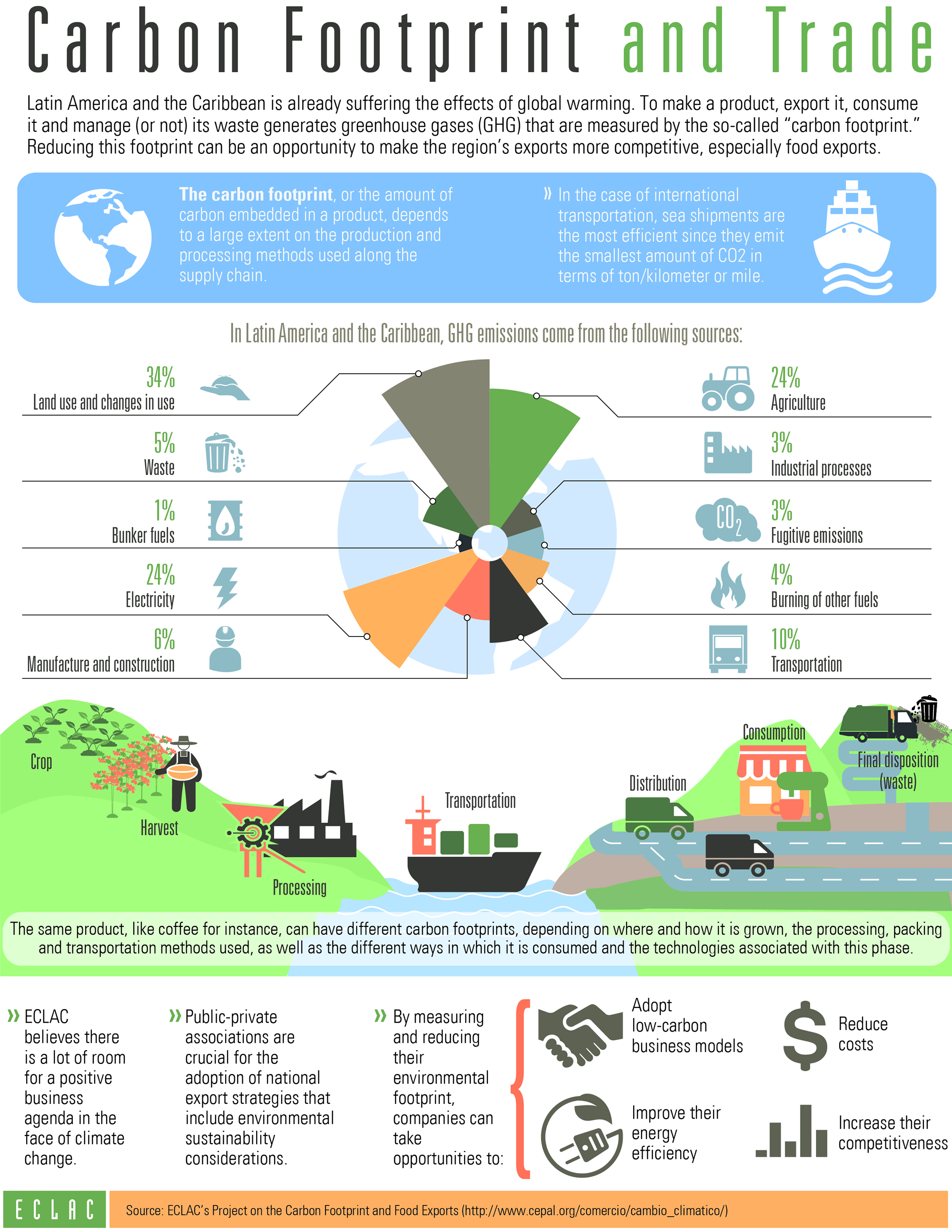Measuring and Reducing Carbon Footprints Would Allow Companies to Improve Their Insertion in Global Trade
Work area(s)
During a side event of the COP 20 being held in Lima, ECLAC stated that there is a great deal of room for a positive business agenda in the face of climate change.
Latin American and Caribbean companies could improve their insertion in global trade if they measure their carbon footprints and took action to reduce them in their productive processes, ECLAC representatives said this Thursday, December 11, during a side event of the 20th Conference of the Parties to the United Nations Framework Convention on Climate Change (COP 20), which is being held in Lima, Peru.
At the meeting, the Economic Commission for Latin America and the Caribbean (ECLAC) presented the results of its project on carbon footprint and food exports in the region, in which eight countries participated over the course of three years (2012-2014).
The event called Trade and Climate Change: Exploring a New Agenda —organized jointly by ECLAC, the Honduran government, and the International Center for Trade and Sustainable Development (ICTSD)— was inaugurated by Alicia Bárcena, ECLAC’s Executive Secretary. Other participants included José Antonio Galdames, the Honduran Secretary of Energy, Natural Resources, Environment and Mining, Ricardo Meléndez-Ortiz, ICTSD’s Chief Executive, Ingrid Jegou, Programme Manager of ICTSD, and Gustavo Gandini, of Dominican Republic’s BANELINO Cooperative.
“There is a great deal of room for a positive business agenda in the face of climate change,” Alicia Bárcena said. “In this context, public-private alliances in our region are crucial for the adoption of national export strategies that include environmental considerations.”
According to the results of ECLAC’s project, the amount of carbon embedded in a product—its carbon footprint—depends to a large extent on the production and processing methods used along the supply chain.
In Latin America this embedded carbon comes mainly from factors such as land use and changes in use—which accounts for 34% of the region’s greenhouse gas (GHG) emissions—as well as the capture and storage of carbon on agricultural fields. In contrast, sea shipments represent just a small part of total emissions.
Two identical products can have different carbon footprints depending on where and how they are grown, the processing, packing and transportation methods used, as well as the different ways in which they are consumed and the disposition of their waste, all of which affect GHG emissions. On each link of this chain the emission sources are different, as are the forms of mitigation.
According to ECLAC, this opens up opportunities for policy makers in producer countries to promote sustainable production and export strategies, while at the same time import markets develop instruments to encourage consumers to opt for low-carbon products.
Other experts presenting at the event were Keiji Inoue, from ECLAC’s Division of International Trade and Integration, and Alicia Frohmann, coordinator of the project on carbon footprint and food exports, from the same division.
More information:
For queries and interviews, please contact María Amparo Lasso, Chief of ECLAC's Public Information Unit.
E-mails: mariaamparo.lasso@cepal.org, prensa@cepal.org; Telephone: (56 2) 2210 2040.
Related content

Carbon Footprint and International Trade of Latin America and the Caribbean
Latin America and the Caribbean is already suffering the effects of global warming. To make a product, export it, consume it and manage (or not) its waste generates greenhouse gases (GHG) that are…
Type
Country(ies)
- Latin America and the Caribbean
-
Peru
Contact
Public Information Unit
- prensa@cepal.org
- (56 2) 2210 2040
María Amparo Lasso, Chief Public Information Unit
- mariaamparo.lasso@cepal.org